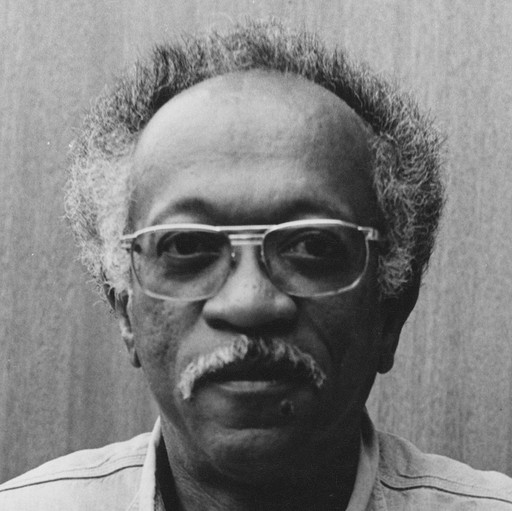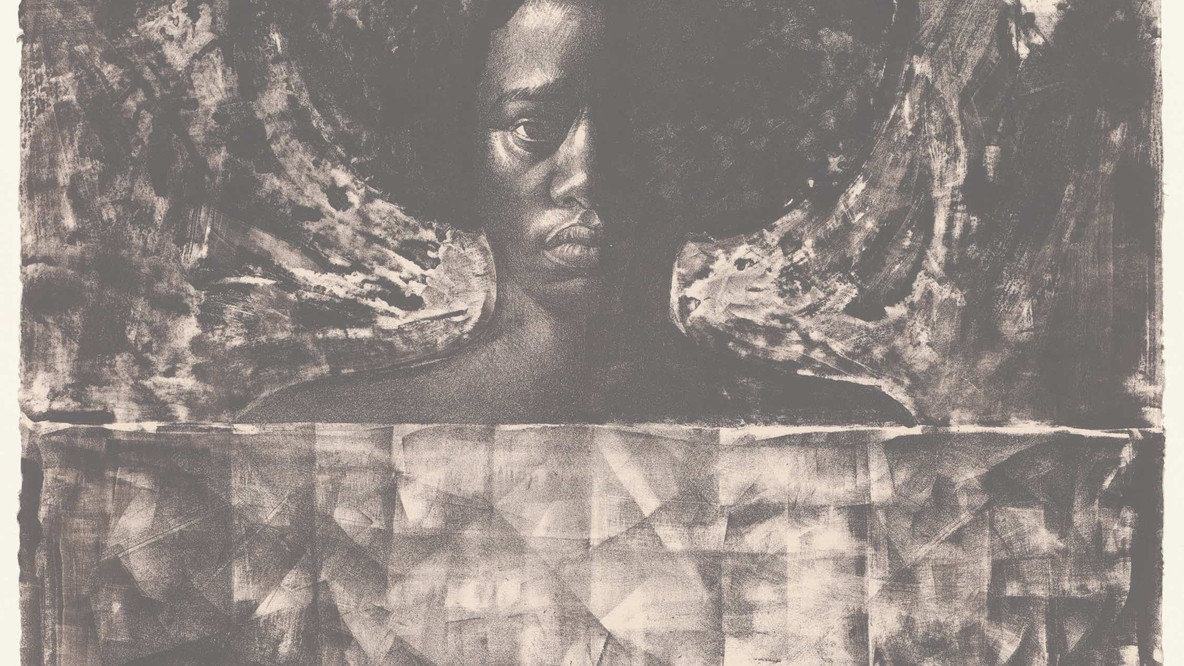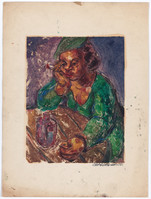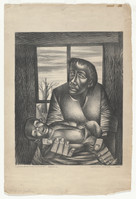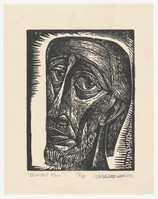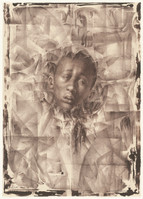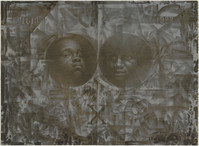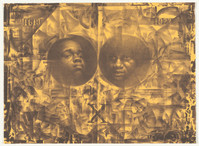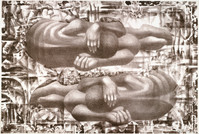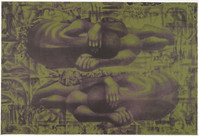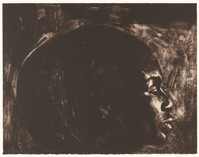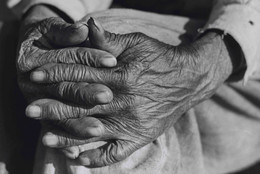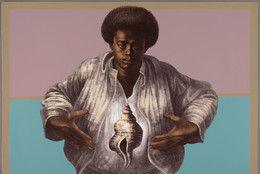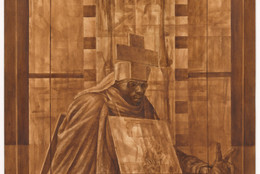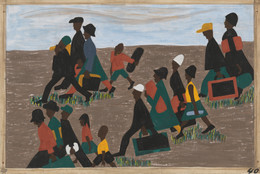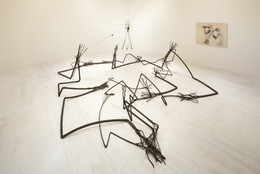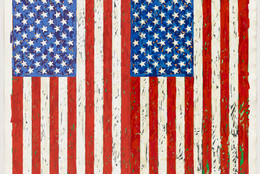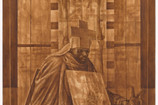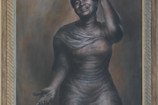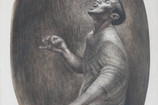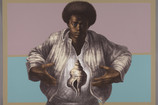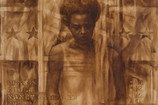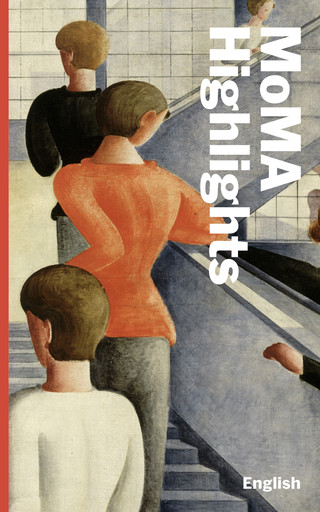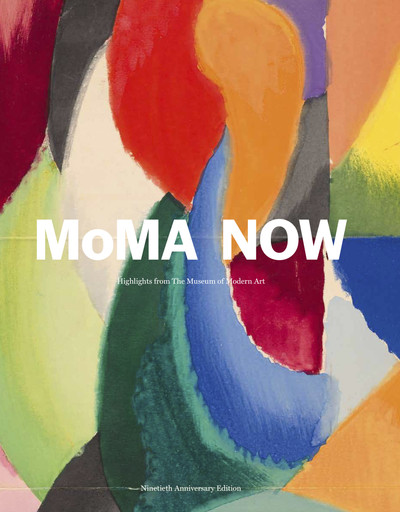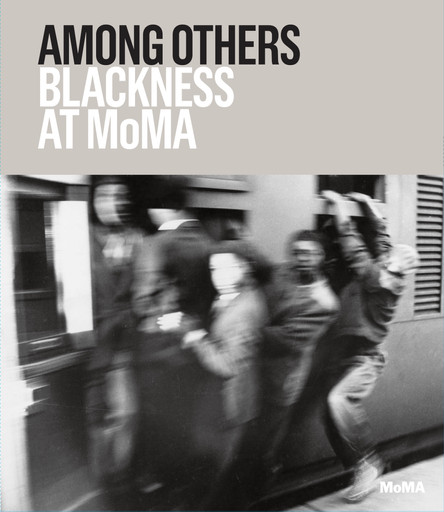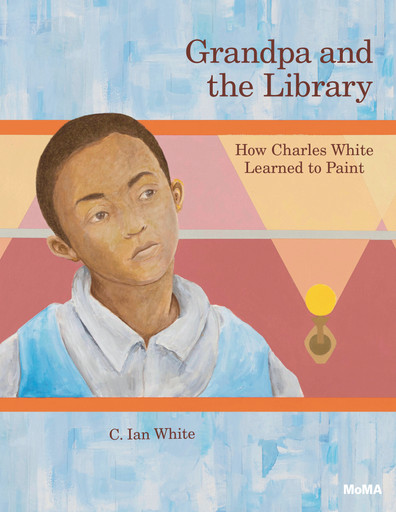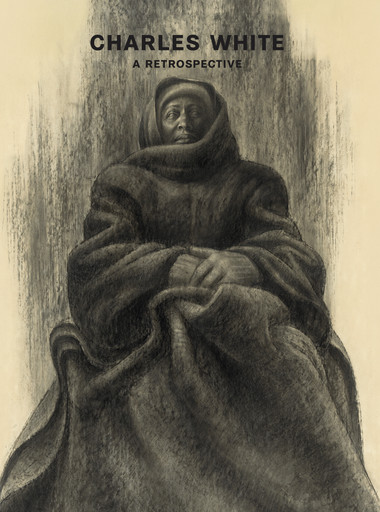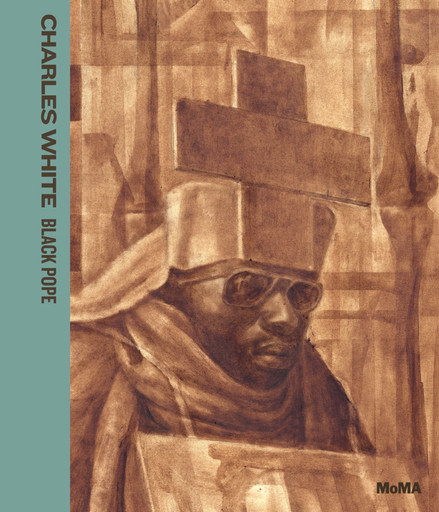“Art must be an integral part of the struggle. It can’t simply mirror what’s taking place.”
Charles White
Charles White’s commitment to creating powerful images of African Americans—what his gallerist and, later, White himself described as “images of dignity”—was unwavering over the course of his four-decade career. White believed that art had a role to play in changing the world: “Art must be an integral part of the struggle. It can’t simply mirror what’s taking place. It must adapt itself to human needs. It must ally itself with the forces of liberation. The fact is, artists have always been propagandists. I have no use for artists who try to divorce themselves from the struggle.”
Using his skills as a draftsman, printmaker, and painter, White developed his style and approach over time to address changing concerns and new audiences. His 1945 lithograph, Hope for the Future, shows a mother holding her child in front of a window that opens onto a bleak landscape; a noose hanging from a barren tree in the background is just visible over the mother’s right shoulder. With this image, White condemns the violence facing African Americans and forces the viewer to confront it. In his much later work Black Pope (Sandwich Board Man) (1973), the central figure, a sunglass-wearing street preacher depicted in the brown oil-wash that would become White’s signature medium, commands viewers’ attention with a sandwich board sign reading “NOW.” The preacher is bundled up in a bulky coat and scarf, while his sunglasses mask his gaze. His raised left hand forms a peace sign that also doubles as a papal blessing. Stenciled text at the top of the composition reads “CHICAGO,” and the haunting skeleton hovering behind the preacher and the shapes and shadows filling the background all hint at further meaning without providing clear answers. White frames the street preacher with gravitas befitting a prophet, leaving the viewer to decode the details.
White lived in Chicago, New York, and, finally, Los Angeles over the course of his career, and was a critical member of creative communities in each of these cities. He counted photographer Gordon Parks, painter Jacob Lawrence, and singer and actor Harry Belafonte as friends and colleagues. From his earliest days as a mature artist, White was also a gifted and dedicated teacher, and David Hammons and Kerry James Marshall were among his many students. His practice of making rigorous, socially committed art affected these younger artists, some of whom continue his legacy in their own work. As Marshall noted, “Under Charles White’s influence I always knew that I wanted to make work that was about something: history, culture, politics, social issues. . . . It was just a matter of mastering the skills to actually do it.”
Esther Adler, Associate Curator, Drawings and Prints
